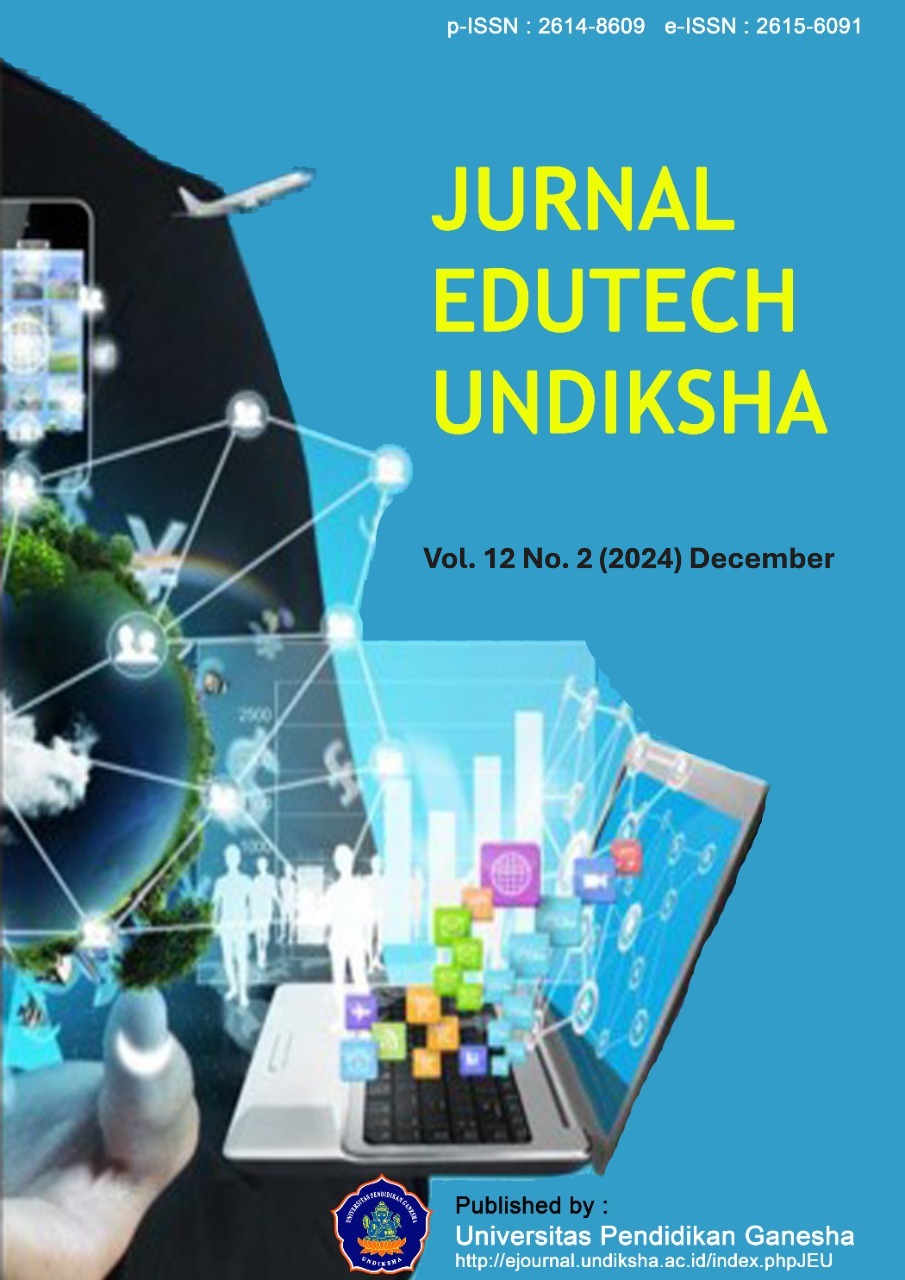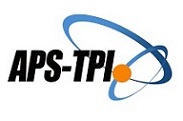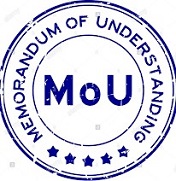Empowering Math Learning with Android: Ethnomathematics Media for 3D Shapes in Elementary Education
DOI:
https://doi.org/10.23887/jeu.v12i2.70060Keywords:
Learning Media, Ethnomathematics, Android, Elementary SchoolAbstract
The use of smartphones in learning activities holds great potential, especially through Android-based learning media, which allows smartphones to serve as tools for operating learning media in the educational process. This potential is further supported by the characteristics of today's students, who are accustomed to gadgets in their daily lives, so both teachers and students do not face difficulty in adjustment. This study aims to develop an innovative Android-based ethnomathematics learning media product for the topic of 3D shapes for elementary school students. This research is a research and development (R&D) study adopting the Alessi & Trollip model, which includes the stages of planning, design, and development. The subjects of this study include two media experts, two content experts, two fifth-grade teachers, and six sixth-grade students. Data were collected using non-test techniques with instruments in the form of validation questionnaires/feasibility questionnaires for media experts, content experts, teachers, and students. The data obtained from the questionnaires were analyzed descriptively to find the average score of each assessment. The results of the study show that the Android-based ethnomathematics learning media received an average total score of 4.65 from media experts, which falls into the "very good" qualification, 4.5 from content experts with the "very good" qualification, 4.5 from two teachers with the "very good" qualification, and 4.3 from students with the "good" qualification. Based on the positive assessments from experts and users, the Android-based learning media developed in this study is deemed "feasible" for use in mathematics learning activities at the elementary school level.
References
Abadi, A., & Ekawati, R. (2018). Redesigning preservice mathematics teacher’s lesson plan by using productive pedagogies framework. Journal of Engineering Science and Technology, 13(5), 1376–1383.
Alessi, S. M., & Trollip, S. R. (2001). Multimedia For Learning: Methods And Development. European jurnal of education studies, 1(1).
Alowayr, A., & Al-Azawei, A. (2021). Predicting mobile learning acceptance: An integrated model and empirical study based on the perceptions of higher education students. Australasian Journal of Educational Technology, 37(3), 38–55. https://doi.org/10.14742/ajet.6154.
Álvarez, J. A. M., Arnold, E. G., Burroughs, E. A., Fulton, E. W., & Kercher, A. (2020). The design of tasks that address applications to teaching secondary mathematics for use in undergraduate mathematics courses. Journal of Mathematical Behavior, 60(August 2020), 1-18.
https://doi.org/10.1016/j.jmathb.2020.100814.
Aurum, E. V., & Surjono, H. D. (2021). The Development of Mobile Base Interactive Learning Multimedia For Critical Thinking Improvement. Journal of Educational Science and Technology, 7(2), 174–187.
https://doi.org/10.26858/est.v0i0.15265.
Ayuningtyas, A. D., & Setiana, D. S. (2019). Pengembangan Bahan Ajar Matematika Berbasis Etnomatematika Kraton Yogyakarta. AKSIOMA: Jurnal Program Studi Pendidikan Matematika, 8(1).
https://doi.org/10.24127/ajpm.v8i1.1630.
Candra Dewi, N. M. L., & Negara, I. G. A. O. (2021). Pengembangan Media Video Animasi IPA pada Pokok Bahasan Sistem Pernapasan Kelas V. Jurnal Edutech Undiksha, 9(1), 122–130.
https://doi.org/10.23887/jeu.v9i1.32501.
Chiappe-Laverde, A., & Paz-Balanta, G. A. (2021). M-learning: Connecting teaching and learning inside and outside of school. Magis, 14, 1–24. https://doi.org/10.11144/JAVERIANA.M14.MLCT.
Cueva, A., & Inga, E. (2022). Information and Communication Technologies for Education Consi.dering the Flipped Learning Model. Education Sciences, 12(3). https://doi.org/10.3390/educsci12030207.
Deshpande, S., & Shesh, A. (2021). Blended learning and analysis of factors affecting the Use of ICT in education. Advances in Intelligent Systems and Computing, 1162, 311–324.
https://doi.org/10.1007/978-981-15-4851-2_33.
Dewi, C. A., Awaliyah, N., Fitriana, N., Darmayani, S., Nasrullah, Setiawan, J., & Irwanto, I. (2022). Using Android-Based E-Module to Improve Students’ Digital Literacy on Chemical Bonding. International Journal of Interactive Mobile Technologies, 16(22), 191–208.
https://doi.org/10.3991/ijim.v16i22.34151.
Dinayusadewi, N. P., Ngurah, G., & Agustika, S. (2020). Development Of Augmented Reality Application As A Mathematics Learning Media In Elementary School Geometry Materials. Journal of Education Technology, 4(2), 204–210. https://doi.org/10.23887/jet.v4i2.25372.
Dron, J. (2022). Educational technology: what it is and how it works. AI and Society, 37(1), 155–166. https://doi.org/10.1007/s00146-021-01195-z.
Ewais, A., Hodrob, R., Maree, M., & Jaradat, S. (2021). Mobile Learning Application for Helping Pupils in Learning Chemistry. International Journal of Interactive Mobile Technologies, 15(1), 105–118. https://doi.org/10.3991/IJIM.V15I01.11897.
Faiziyah, N., Sutama, Sholihah, I., Wulandari, S., & Yudha, D. A. (2020). Enhancing Creativity through Ethnomathematics. Universal Journal of Educational Research, 8(8), 3704–3710.
https://doi.org/10.13189/ujer.2020.080850.
Gabriel, F., Buckley, S., & Barthakur, A. (2020). The impact of mathematics anxiety on self-regulated learning and mathematical literacy. Australian Journal of Education, 64(3), 227–242.
Haryanti, A., Yusuf, M., & Agung, L. (2021). Students’ Perceptions About the Use of Android-Based Learning Media in Physical Education Learning. AL-ISHLAH: Jurnal Pendidikan, 13(2), 836–842.
https://doi.org/10.35445/alishlah.v13i2.633.
Haryati, S., Rizal, F., & Syah, N. (2021). Meningkatkan Hasil Belajar Siswa Menengah Kejuruan Melalui Mobile Learning. Jurnal Edutech Undiksha, 8(1), 31–39. https://doi.org/10.23887/jeu.v9i1.31896.
Hasanudin, C., Fitrianingsih, A., Nuri, D., Utomo, P., Fitriyana, N., & Language, I. (2022). Android Based Material to Teach Early Reading for Primary Students using Construct 2. Ingenierie des Systemes d’Information, 27(6), 933–940.
Ismail, N. S., Harun, J., Zakaria, M. A. Z. M., & Salleh, S. M. (2018). The effect of Mobile problem-based learning application DicScience PBL on students’ critical thinking. Thinking Skills and Creativity, 28, 177–195. https://doi.org/10.1016/j.tsc.2018.04.002.
Jung, E., Zhang, Y., & Chiang, J. (2019). Teachers’ mathematics education and readiness beliefs, and kindergarteners’ mathematics learning. International Journal of Education in Mathematics, Science and Technology, 7(2), 137–154. https://doi.org/10.18404/ijemst.552416.
Kenedi, A. K., Helsa, Y., Ariani, Y., Zainil, M., & Hendri, S. (2019). Mathematical connection of elementary school students to solve mathematical problems. Journal on Mathematics Education, 10(1). https://doi.org/10.22342/jme.10.1.5416.69-80.
Khadka, J., Joshi, D. R., Adhikari, K. P., & Khanal, B. (2023). Teachers’ Humanistic Role in Teaching Mathematics Online during the COVID-19 Pandemic in Nepal. International Journal of Distance Education Technologies, 21(1), 1–19. https://doi.org/10.4018/IJDET.324951.
Khatri, K. K. (2020). Research Paradigm: A Philosophy of Educational Research. International Journal of English Literature and Social Sciences, 5(5). https://doi.org/10.22161/ijels.55.15.
Korsgaard, M. T. (2020). Exemplarity and education: Retuning educational research. British Educational Research Journal, 46(6). https://doi.org/10.1002/berj.3636.
Kumar, B. A., & Chand, S. S. (2019). Mobile learning adoption : A systematic review. Education and Information Technologies, January. https://doi.org/10.1007/s10639-018-9783-6.
Lavrenova, M., Lalak, N. V., & Molnar, T. I. (2020). Preparation of Future Teachers for Use of ICT in Primary School. Revista Romaneasca pentru Educatie Multidimensionala, 12(1Sup1), 185–195.
https://doi.org/10.18662/rrem/12.1sup1/230.
Lestari, I., Maksum, A., & Kustandi, C. (2019). Mobile learning design models for State University of Jakarta, Indonesia. International Journal of Interactive Mobile Technologies, 13(9).
https://doi.org/10.3991/ijim.v13i09.10987.
Lim, C. P., Ra, S., Chin, B., & Wang, T. (2020). Information and communication technologies (ICT) for access to quality education in the global south: A case study of Sri Lanka. Education and Information Technologies, 25(4), 2447–2462. https://doi.org/10.1007/s10639-019-10069-3.
Lisana, L., & Suciadi, M. F. (2021). The Acceptance of Mobile Learning: A Case Study of 3D Simulation Android App for Learning Physics. International Journal of Interactive Mobile Technologies, 15(17), 205–214. https://doi.org/10.3991/IJIM.V15I17.23731.
Machaba, F. M. (2018). Pedagogical demands in mathematics and mathematical literacy: A case of mathematics and mathematical literacy teachers and facilitators. Eurasia Journal of Mathematics, Science and Technology Education, 14(1), 95–108. https://doi.org/10.12973/ejmste/78243.
Mania, S., & Alam, S. (2021). Teachers’ Perception toward the Use of Ethnomathematics Approach in Teaching Math. International Journal of Education in Mathematics, Science, and Technology (IJEMST, 9(2), 282-298. https://doi.org/10.46328/ijemst.1551.
Marbán, J. M., Radwan, E., Radwan, A., & Radwan, W. (2021). Primary and secondary students’ usage of digital platforms for mathematics learning during the COVID-19 outbreak: The case of the Gaza strip. Mathematics, 9(2), 1–21. https://doi.org/10.3390/math9020110.
Matzavela, V., & Alepis, E. (2021). M-learning in the COVID-19 era: physical vs digital class. Education and Information Technologies, 26(6), 7183–7203. https://doi.org/10.1007/s10639-021-10572-6.
Melumad, S., & Pham, M. T. (2021). The smartphone as a pacifying technology. Journal of Consumer Research, 47(2). https://doi.org/10.1093/JCR/UCAA005.
Muslim, F., Refnida, R., Chen, D., & Wirayuda, R. P. (2021). Macroeconomic Digital Book Development: How are the Feasibility of Experts and Student Responses? Journal of Education Technology, 5(3). https://doi.org/10.23887/jet.v5i3.38280.
Mutmainah, Rukayah, & Indriayu, M. (2019). Effectiveness of experiential learning-based teaching material in mathematics. International Journal of Evaluation and Research in Education, 8(1), 57–63. https://doi.org/10.11591/ijere.v8i1.15903.
Nasir, A. M., & Nirfayanti, N. (2020). Effectiveness Of Mathematic Learning Media Based On Mobile Learning In Improving Student Learning Motivation. Daya Matematis: Jurnal Inovasi Pendidikan Matematika, 7(3). https://doi.org/10.26858/jds.v7i3.11867.
Ngabekti, Prasetyo, Hardianti, & Teampanpong. (2019). The Development of STEM Mobile Learning Package Ekosistem. Jurnal Pendidikan IPA Indonesia, 8(1), 81–88.
https://doi.org/10.15294/jpii.v8i1.16905.
Nisiotis, L. (2021). Utilising mobile game based learning methods effectively to support education. Educational Technology Research and Development, 69(1), 177–180.
https://doi.org/10.1007/s11423-020-09887-x.
Pahmi, S., Hendriyanto, A., Sahara, S., Muhaimin, L. H., Kuncoro, K. S., & Usodo, B. (2023). Assessing the Influence of Augmented Reality in Mathematics Education: A Systematic Literature Review. International Journal of Learning, Teaching and Educational Research, 22(5), 1–25.
https://doi.org/10.26803/ijlter.22.5.1.
Parimita Dewi, I. D. A. M., & Bayu, G. W. (2022). E-Book Berbasis Problem Based Learning Materi Bangun Ruang Muatan Matematika Kelas VI SD. Jurnal Edutech Undiksha, 10(2), 353–363.
https://doi.org/10.23887/jeu.v10i2.48606.
Permatasari, B. D., Gunarhadi, & Riyadi. (2019). The influence of problem based learning towards social science learning outcomes viewed from learning interest. International Journal of Evaluation and Research in Education, 8(1), 39–46. https://doi.org/10.11591/ijere.v8i1.15594.
Prasetyo, H., Kristiyanto, A., & Doewes, M. (2019). The Development of Android-Based Mobile Learning Media in Healthy Lifestyle Teaching Materials for Senior High School Students. International Journal of Multicultural and Multireligious Understanding, 6(2).
https://doi.org/10.18415/ijmmu.v6i2.656.
Purwaningsih, W., & Wangid, M. N. (2021). Improving students’ critical thinking skills using Time Bar Media in Mathemathics learning in the third grade primary school. Jurnal Prima Edukasia, 9(2). https://doi.org/10.21831/jpe.v9i2.39429.
Putri, D. P. E. (2019). Penggunaan Media Pembelajaran Berbasis Android untuk Meningkatkan Hasil Belajar Kognitif Siswa. Edugama: Jurnal Kependidikan dan Sosial Keagamaan, 5(2), 104–111.
https://doi.org/10.32923/edugama.v5i2.972.
Putri, K., Muchtar, Z., & Darmana, A. (2021). Develop an Android-Based Learning Media Integrated with a Scientific Approach to the Colligative Solution’s Nature. Budapest International Research and Critics in Linguistics and Education (BirLE) Journal, 4(1), 322–329.
https://doi.org/10.33258/birle.v4i1.1605.
Qodr, T. S., Efendi, A., & Musadad, A. A. (2021). Opportunities for Using Smartphones in the Digital Era to Facilitate Students in Learning Sociology in High Schools. Journal of Education Technology, 5(2), 263–271. https://doi.org/10.23887/jet.v5i2.34806.
Qohar, A., Susiswo, Nasution, S. H., & Wahyuningsih, S. (2021). Development of Android-Based Mathematics Learning Game on the Topic of Congruence and Similarity. International Journal of Interactive Mobile Technologies, 15(9), 52–69. https://doi.org/10.3991/ijim.v15i09.20723.
Ramlee, N., Rosli, M. S., & Saleh, N. S. (2019). Mathematical HOTS cultivation via online learning environment and 5E inquiry model: Cognitive impact and the learning activities. International Journal of Emerging Technologies in Learning, 14(24), 140–151. https://doi.org/10.3991/ijet.v14i24.12071.
Riyanto, R., Amin, M., Suwono, H., & Lestari, U. (2020). The New Face of Digital Books in Genetic Learning: A Preliminary Development Study for Students’ Critical Thinking. International Journal of Emerging Technologies in Learning (iJET), 15(10), 175. https://doi.org/10.3991/ijet.v15i10.14321.
Rosidah, U. A., Marwoto, P., & Subali, B. (2021). Analysis of the Need for Android Based Mobile Learning Development to Improve Student Science Literations. Jurnal Penelitian Pendidikan IPA, 7(4), 601–606. https://doi.org/10.29303/jppipa.v7i4.805.
Sarsar, F., Kale, Ö. A., Andiç‐Çakır, Ö., Gueorguiev, T., Evstatiev, B., Georgieva, T., Kadirova, S., Mihailov, N., Różewski, P., Kieruzel, M., Lipczyński, T., Prys, M., & Leeuwen, M. (2021). Multicultural investigation of the students’ acceptance of using digital learning materials in laboratory classes. Computer Applications in Engineering Education, 29(4), 883–896. https://doi.org/10.1002/cae.22322.
Setiawardhani, R. T. (2021). Android-Based Multimedia Development and Worthiness for Economic Learning in High School. AL-ISHLAH: Jurnal Pendidikan, 13(2), 1185–1193.
https://doi.org/10.35445/alishlah.v13i2.559.
Shahbari, J. A., & Daher, W. (2020). Learning congruent triangles through ethnomathematics: The case of students with difficulties in mathematics. Applied Sciences (Switzerland), 10(14).
https://doi.org/10.3390/app10144950.
Simanjuntak, S. F. (2019). Development of Interactive Multimedia Towards Economic Problems on Economic Subjects for Social Science Class X Students At Darma Yudha High School. International Journal of Educational Best Practices, 3(2), 64. https://doi.org/10.31258/ijebp.v3n2.p64-74.
Son, A. L., Darhim, & Fatimah, S. (2020). Students’ mathematical problem-solving ability based on teaching models intervention and cognitive style. Journal on Mathematics Education, 11(2), 209–222. https://doi.org/10.22342/jme.11.2.10744.209-222.
Sousa, M. J., & Rocha, Á. (2019). Digital learning: Developing skills for digital transformation of organizations. Future Generation Computer Systems, 91, 327–334.
https://doi.org/10.1016/j.future.2018.08.048.
Suryanda, A., Sartono, N., & Sa’diyah, H. (2019). Developing smartphone-based laboratory manual as a learning media. Journal of Physics: Conference Series, 402. https://doi.org/10.1088/1742-6596/1402/7/077077.
Susanti, T., Kurniadewi, F., & Nurjayadi, M. (2021). Development of protein metabolism electronic module by flip PDF professional application. In Journal of Physics: Conference Series, 012025. https://doi.org/10.1088/1742-6596/1869/1/012025.
Syarifuddin, S., Ahmad, M. A., Anshari, A., & Yunus, M. (2022). Development Of Mathematics Learning Model Using Etnomatics To Improve Mathematics Problem Solving Ability. Journal of Positive School Psychology, 2022(11), 600–609.
Tang, H., Seah, W. T., Zhang, Q., & Zhang, W. (2021). The Mathematics Learning Attributes Valued by Students in Eastern China. ECNU Review of Education, 4(2), 261–284.
https://doi.org/10.1177/2096531120930240.
Umbara, U., & Suryadi, D. (2019). Re-interpretation of mathematical literacy based on the teacher’s perspective. International Journal of Instruction, 12(4). https://doi.org/10.29333/iji.2019.12450a
Uther, M. (2019). Mobile learning—trends and practices. Education Sciences, 9(1).
https://doi.org/10.3390/educsci9010033.
Yakub, R. D., Halimah, A., & Angriani, A. D. (2019). Pengembangan Perangkat Pembelajaran Matematika Berbasis Kontekstual. Alauddin Journal of Mathematics Education, 1(2), 98.
https://doi.org/10.24252/ajme.v1i2.10968.
Zaheer, S., Butt, S. M., Anatolyevna, G. V., & Salmani, H. (2018). Do Mobile Technology in the Classroom Really Improve Learning Outcomes? International Journal of Evaluation and Research in Education (IJERE), 7(3), 188. https://doi.org/10.11591/ijere.v7i3.13426.
Downloads
Published
How to Cite
Issue
Section
License
Copyright (c) 2024 Nur Julianto, Agus Efendi, Gunarhadi

This work is licensed under a Creative Commons Attribution-ShareAlike 4.0 International License.
Authors who publish with the Jurnal Edutech Undiksha (JEU) agree to the following terms:
- Authors retain copyright and grant the journal the right of first publication with the work simultaneously licensed under an Attribution-ShareAlike 4.0 International (CC BY-SA 4.0) that allows others to share the work with an acknowledgment of the work's authorship and initial publication in this journal.
- Authors are able to enter into separate, additional contractual arrangements for the non-exclusive distribution of the journal's published version of the work (e.g., post it to an institutional repository or publish it in a book), with an acknowledgment of its initial publication in this journal.
- Authors are permitted and encouraged to post their work online (e.g., in institutional repositories or on their website) prior to and during the submission process, as it can lead to productive exchanges, as well as earlier and greater citation of published work. (See The Effect of Open Access)








